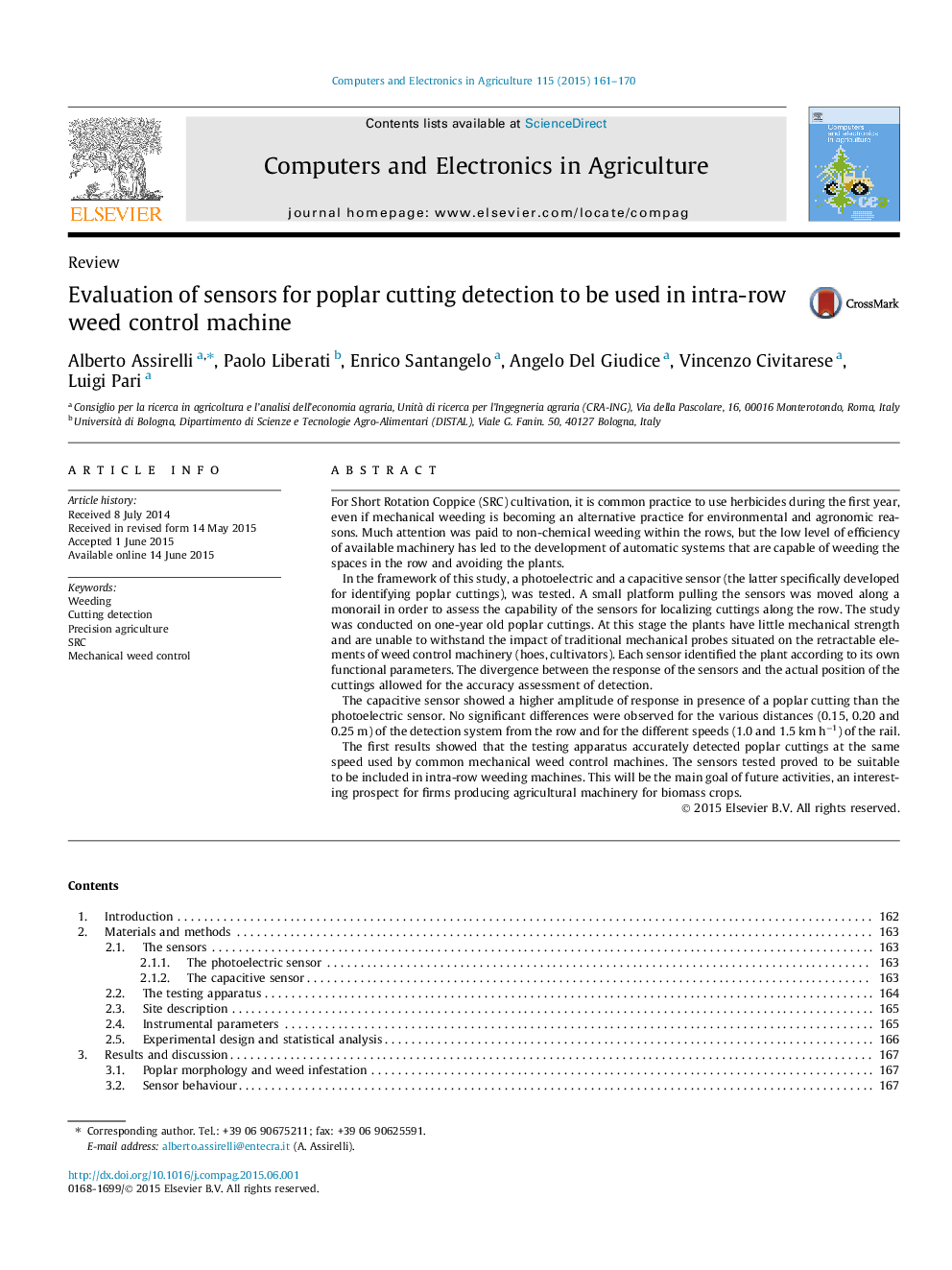| Article ID | Journal | Published Year | Pages | File Type |
|---|---|---|---|---|
| 84130 | Computers and Electronics in Agriculture | 2015 | 10 Pages |
•In Short Rotation Coppice (SRC) of poplar, the weeds within the row have a detrimental effect.•A photoelectric and capacitive sensors was used for detecting the poplar cuttings along the row.•The detection system has proved able to recognize the poplar cuttings.•The system appears suitable for a future evaluation on the intra-row weeding machines.
For Short Rotation Coppice (SRC) cultivation, it is common practice to use herbicides during the first year, even if mechanical weeding is becoming an alternative practice for environmental and agronomic reasons. Much attention was paid to non-chemical weeding within the rows, but the low level of efficiency of available machinery has led to the development of automatic systems that are capable of weeding the spaces in the row and avoiding the plants.In the framework of this study, a photoelectric and a capacitive sensor (the latter specifically developed for identifying poplar cuttings), was tested. A small platform pulling the sensors was moved along a monorail in order to assess the capability of the sensors for localizing cuttings along the row. The study was conducted on one-year old poplar cuttings. At this stage the plants have little mechanical strength and are unable to withstand the impact of traditional mechanical probes situated on the retractable elements of weed control machinery (hoes, cultivators). Each sensor identified the plant according to its own functional parameters. The divergence between the response of the sensors and the actual position of the cuttings allowed for the accuracy assessment of detection.The capacitive sensor showed a higher amplitude of response in presence of a poplar cutting than the photoelectric sensor. No significant differences were observed for the various distances (0.15, 0.20 and 0.25 m) of the detection system from the row and for the different speeds (1.0 and 1.5 km h−1) of the rail.The first results showed that the testing apparatus accurately detected poplar cuttings at the same speed used by common mechanical weed control machines. The sensors tested proved to be suitable to be included in intra-row weeding machines. This will be the main goal of future activities, an interesting prospect for firms producing agricultural machinery for biomass crops.
